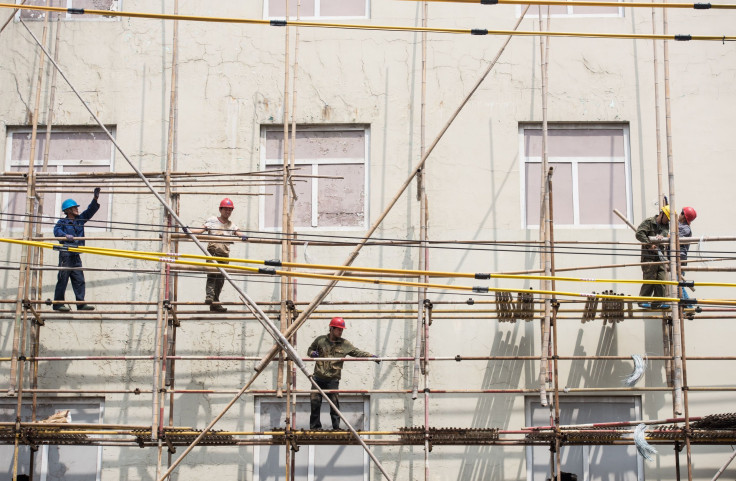China Q1 2016 GDP Growth Expected To Hit Multiyear Low Despite Recent Signs Of Stability

China will report its first-quarter gross domestic product data at 10:00 p.m. EDT Thursday, and analysts expect the world’s second-largest economy to have grown at a record low pace of 6.7 percent in the three-month period ending March 31. If the predictions bear out, it would be the slowest quarterly growth the country has witnessed since the first quarter of 2009, when the economy, reeling under the effects of the financial crisis, grew 6.2 percent.
“We expect first-quarter real GDP growth to edge down to 6.7 percent year on year from 6.8 percent in fourth quarter, with modestly slower growth in both secondary and tertiary sectors,” Bank of America Merrill Lynch analysts said in a report.
In 2015, China’s GDP growth slowed to a 25-year low of 6.9 percent, as uncertainty over the central bank’s monetary policy, drops in exports and factory overcapacity hit investor sentiment. Beijing’s decision to shift the economy’s gears from manufacturing to consumption also adversely affected last year's GDP.
“We expect this trend in slowing growth to continue into 2016, likely contributing to a first-quarter 2016 year-over-year growth rate below 6.8 percent as GDP growth moves toward the lower end of the Chinese central government’s target range,” Peter Donisanu, global research analyst at Wells Fargo Investment Institute, told MarketWatch.
However, recent economic data has offered a sliver of hope, suggesting that the country’s battered economy may be heading toward a semblance of stability.
In March, for instance, China’s exports rose 11.5 percent year-on-year in dollar terms — the first increase in nine months and up from a 25.4 percent decline in February. Additionally, inflation — as measured by the consumer price index — held steady at 2.3 percent, while the official manufacturing purchasing managers’ index, a key gauge of economic activity, rose to 50.2 last month from 49 in February.
Earlier this week, the International Monetary Fund also upgraded China’s growth estimate by 0.2 percentage points to bring it in line with the lower end of Beijing’s forecast of 6.5 to 7 percent GDP growth in 2016.
“If there is any disappointment in the GDP figure, markets will expect more stimulus to be carried out by the central bank in order to achieve their targeted 6.5 to 7 percent growth. Any sign of weakness could probably lead to more room for monetary policy, for example, another round of reserve ratio requirement cut,” Margaret Yang, a market analyst at CMC Markets in Singapore, told Channel NewsAsia.
© Copyright IBTimes 2024. All rights reserved.












